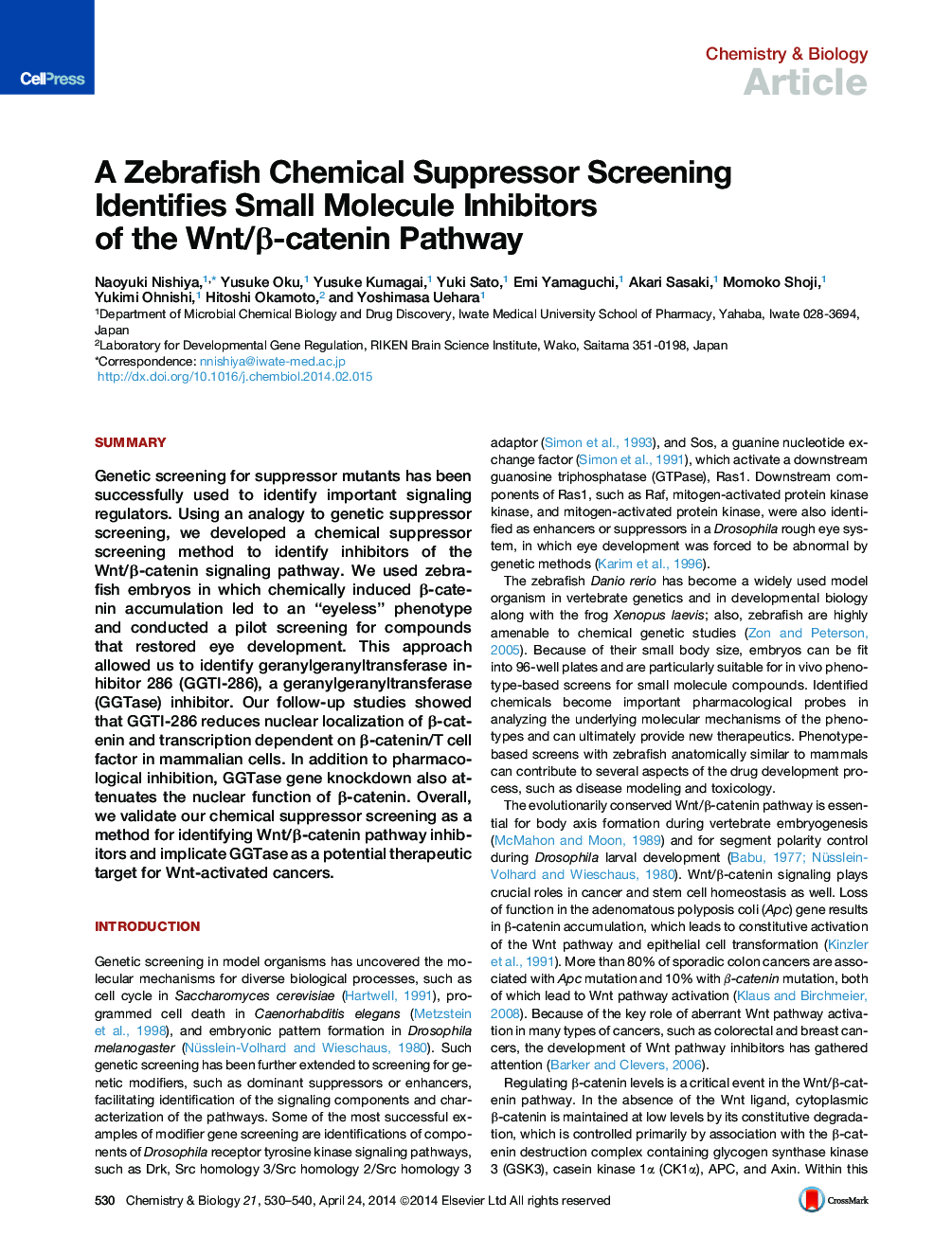| Article ID | Journal | Published Year | Pages | File Type |
|---|---|---|---|---|
| 1391099 | Chemistry & Biology | 2014 | 11 Pages |
•A phenotype-based chemical suppressor screening was developed using zebrafish embryos•Chemical suppressors of “eyeless” inhibit the Wnt/β-catenin pathway in cancer cells•Geranylgeranyltransferase inhibitors suppress the Wnt/β-catenin pathway•Geranylgeranyltransferase inhibitors reduce nuclear localization of β-catenin
SummaryGenetic screening for suppressor mutants has been successfully used to identify important signaling regulators. Using an analogy to genetic suppressor screening, we developed a chemical suppressor screening method to identify inhibitors of the Wnt/β-catenin signaling pathway. We used zebrafish embryos in which chemically induced β-catenin accumulation led to an “eyeless” phenotype and conducted a pilot screening for compounds that restored eye development. This approach allowed us to identify geranylgeranyltransferase inhibitor 286 (GGTI-286), a geranylgeranyltransferase (GGTase) inhibitor. Our follow-up studies showed that GGTI-286 reduces nuclear localization of β-catenin and transcription dependent on β-catenin/T cell factor in mammalian cells. In addition to pharmacological inhibition, GGTase gene knockdown also attenuates the nuclear function of β-catenin. Overall, we validate our chemical suppressor screening as a method for identifying Wnt/β-catenin pathway inhibitors and implicate GGTase as a potential therapeutic target for Wnt-activated cancers.
Graphical AbstractFigure optionsDownload full-size imageDownload high-quality image (334 K)Download as PowerPoint slide
